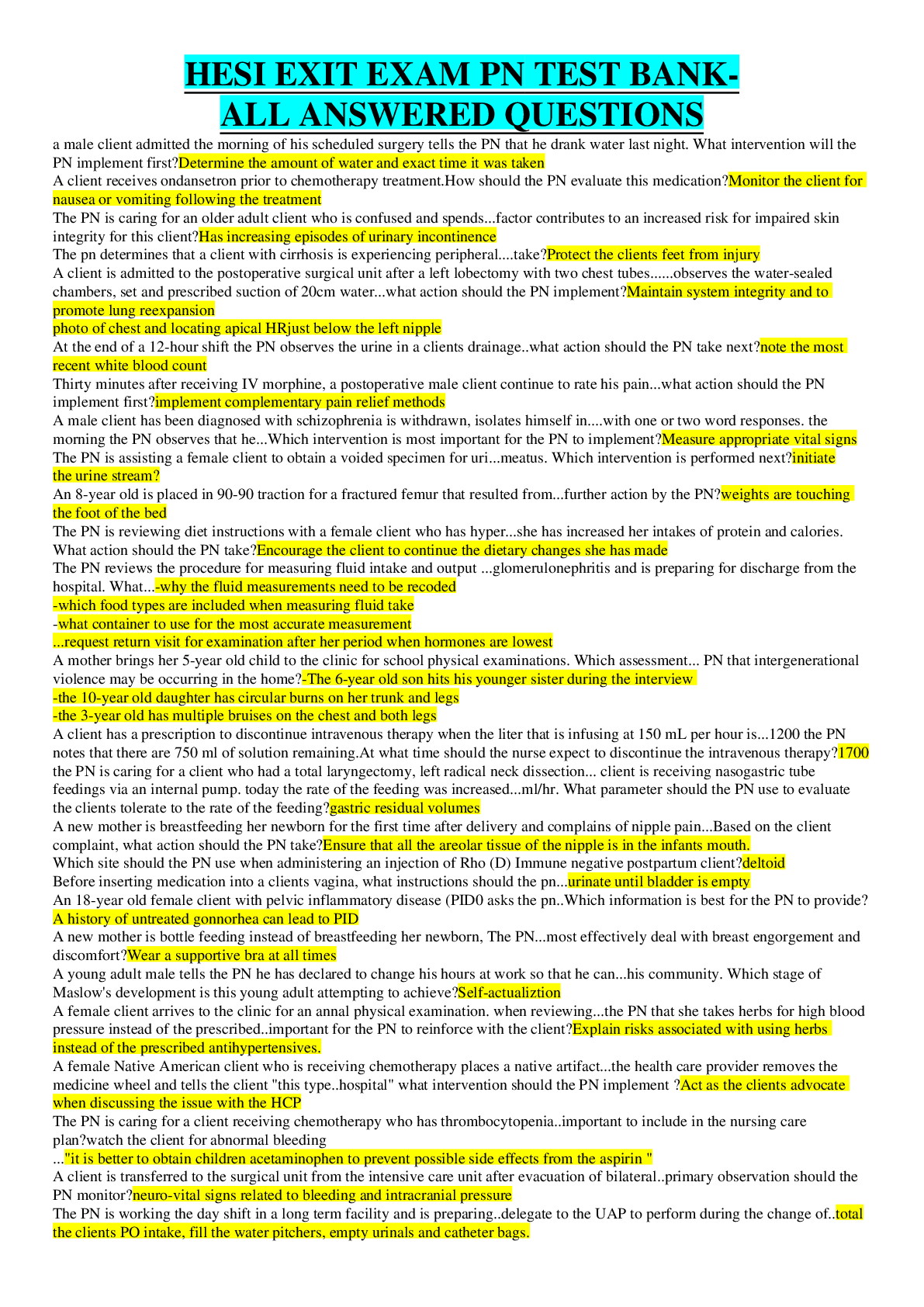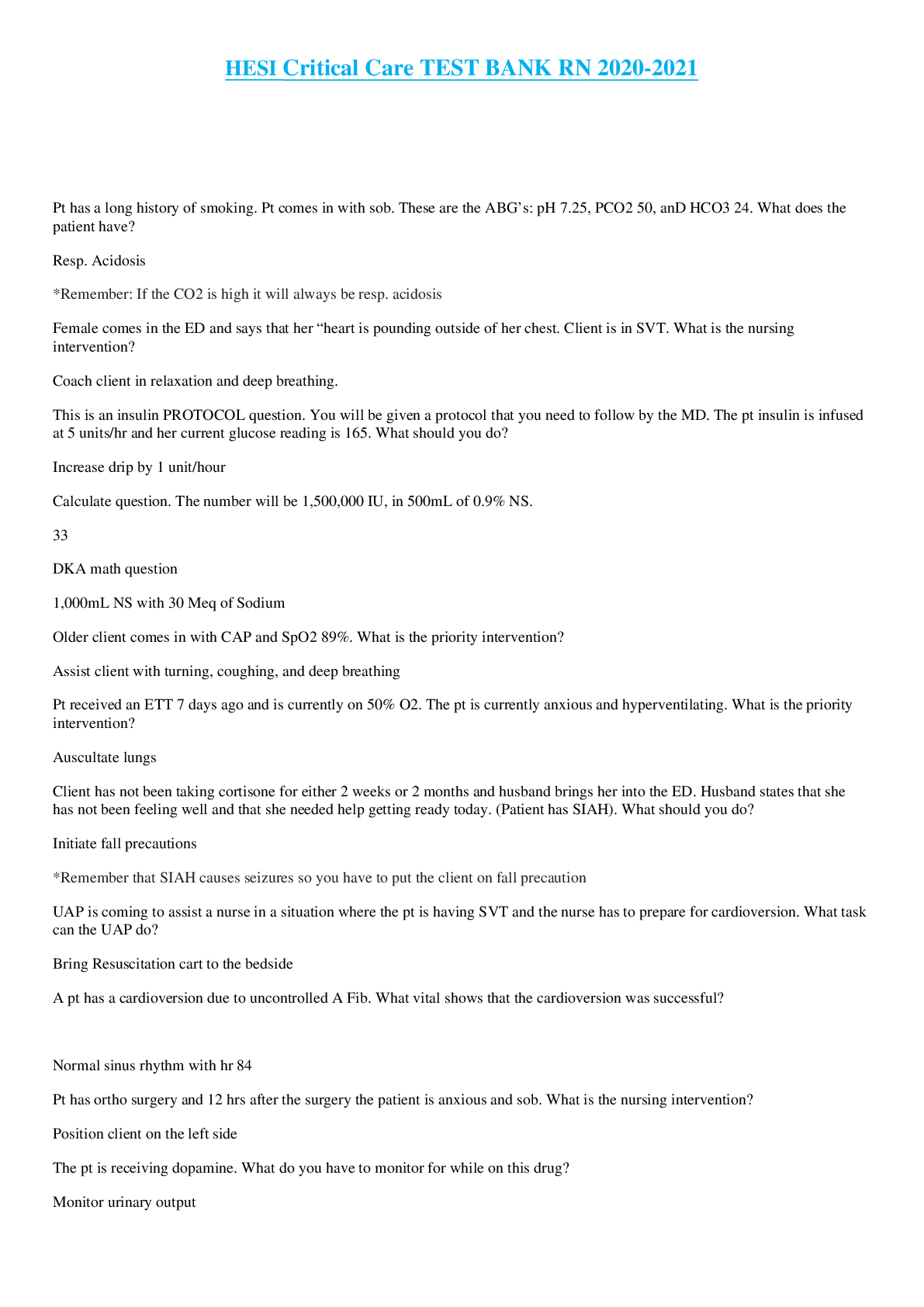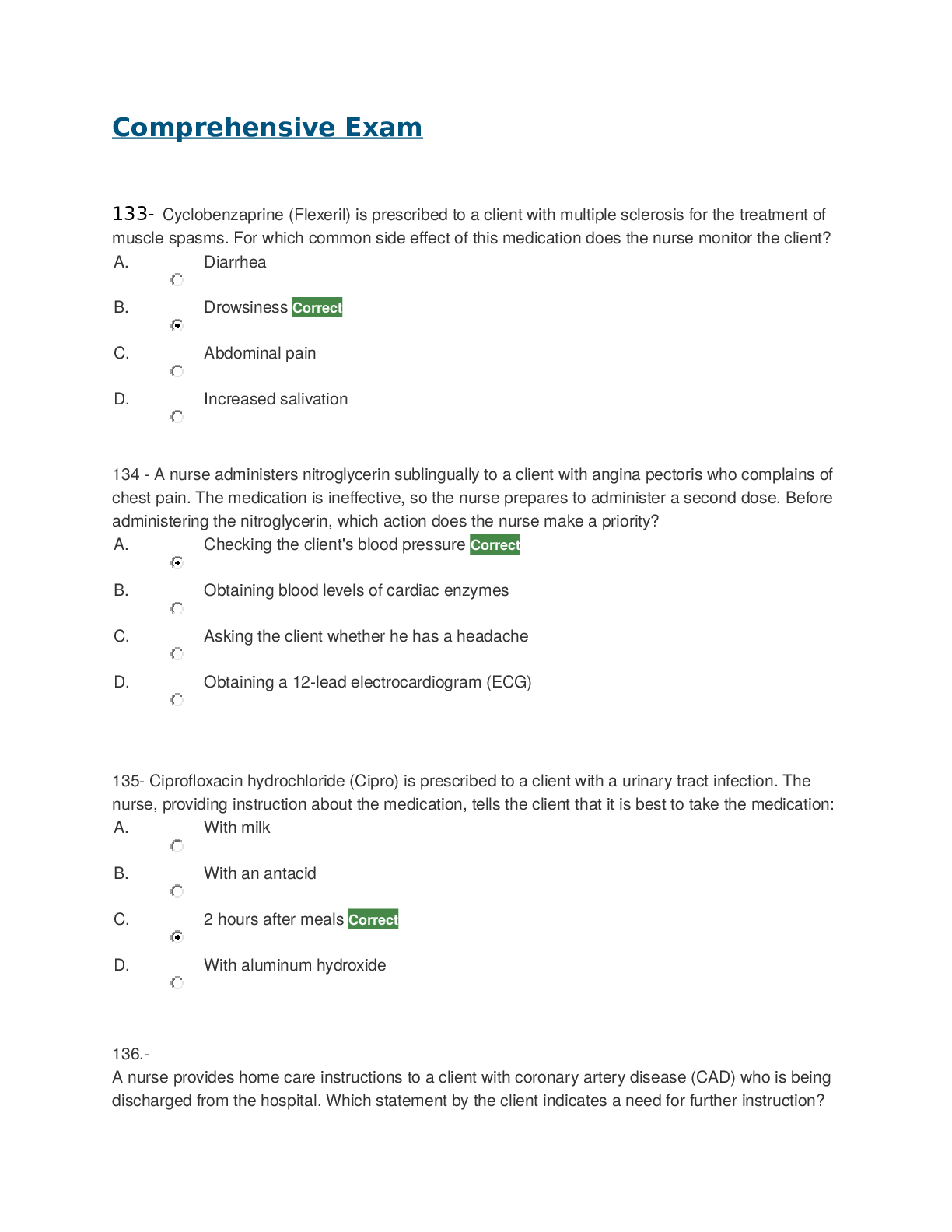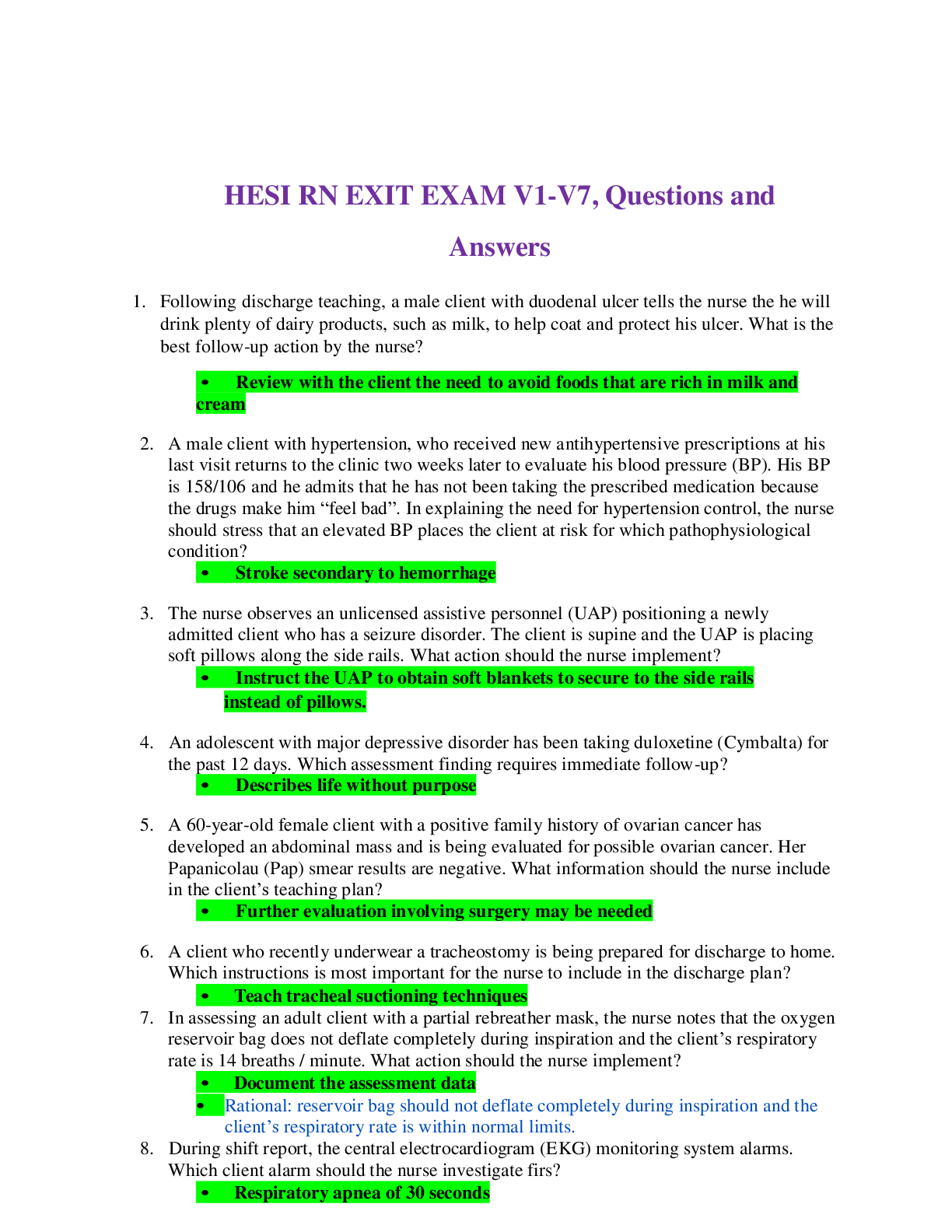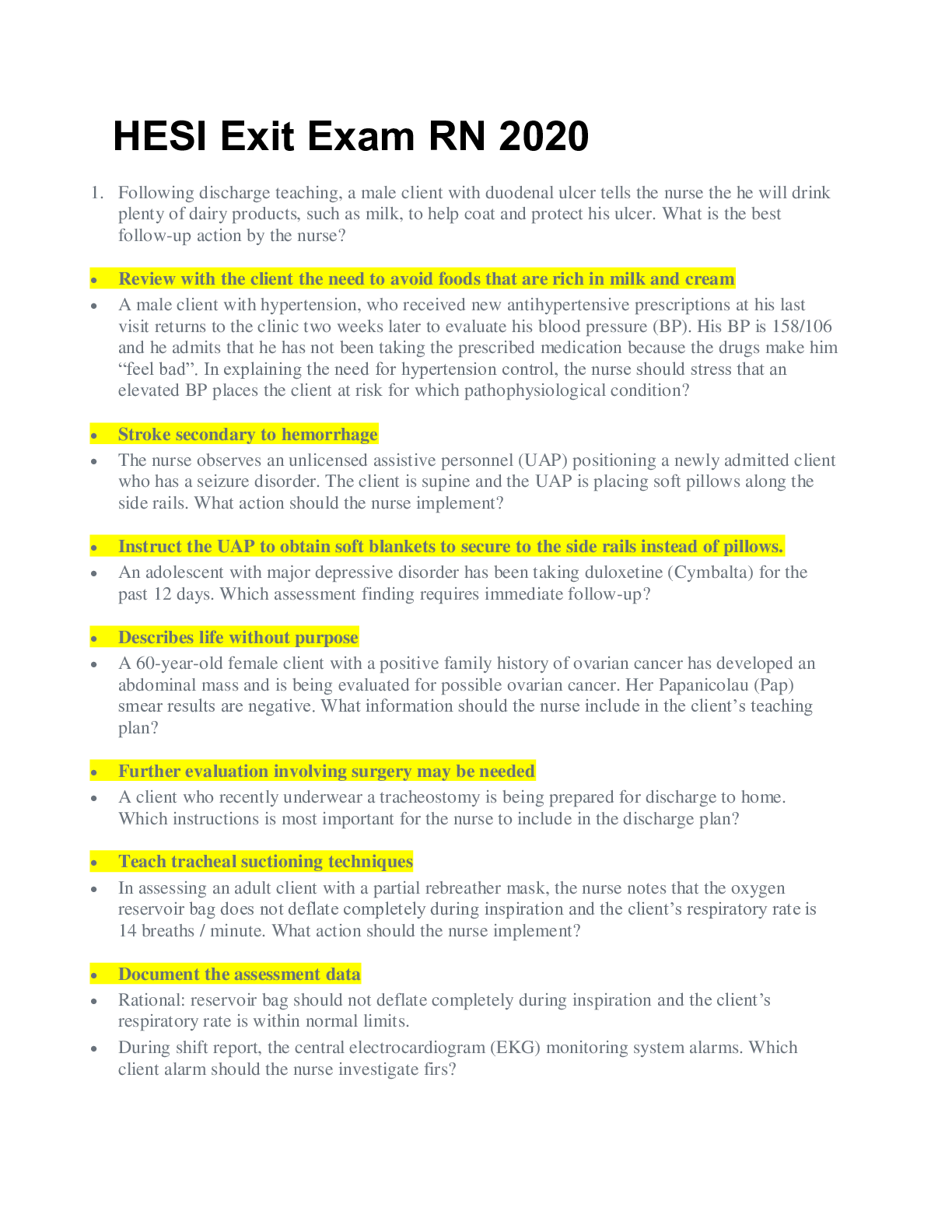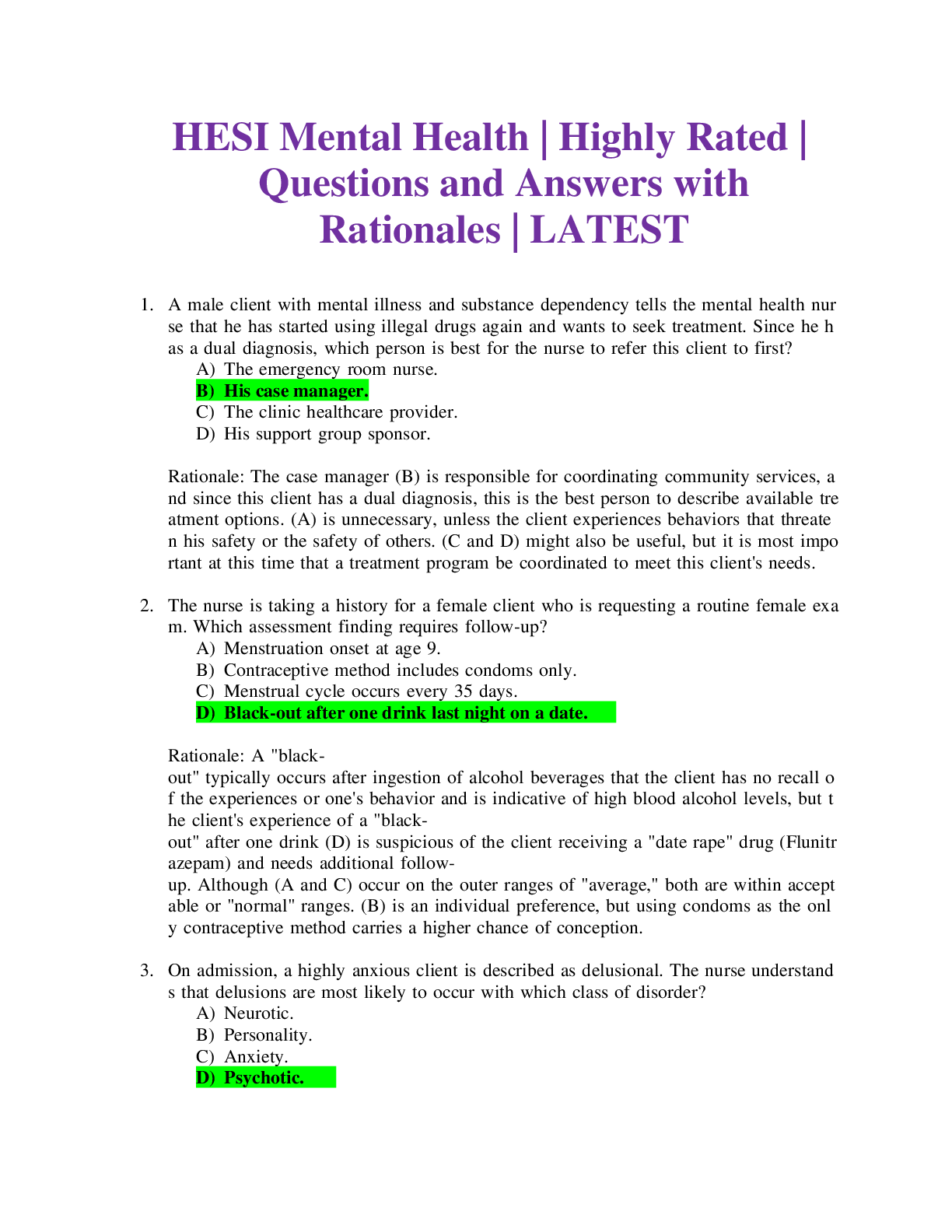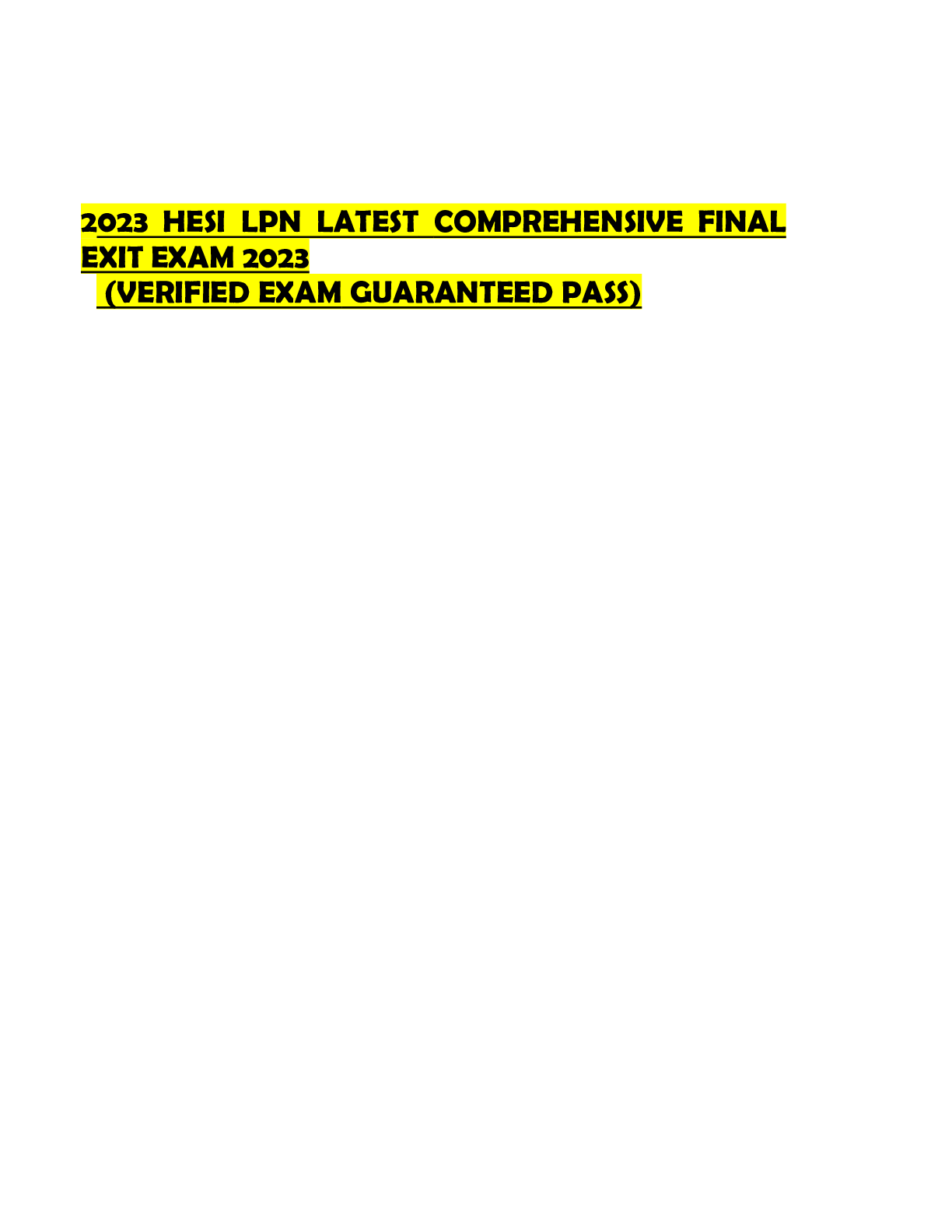2022 MED-SURG HESI EXAM
Document Content and Description Below
1. The nurse empties the nasogastric suction collection canister of a client who had a bowel resection the previous day and note that 1000 ml of gastric secretions were collected in the last 4 hours. ... a. Metabolic alkalosis b. Hyperkalemia c. Metabolic acidosis d. Hypoglycemia 2. A young client who is being taught to use an inhaler for symptoms of asthma tells the nurse the intention to use the inhaler but, plans to continue smoking cigarettes in evaluating the client’s response, what is the best initial action by the nurse? a. Inform the health care provider of this statement made by the client. b. Explain that denial of illness can interfere with the treatment regimen. c. Revise the plan of care based on the client’s plans to continue smoking. d. Review factors surrounding client’s beliefs about smoking cessation. 3. A client with sudden onset of big toe joint pain and swelling is diagnosed with gout. Which pathophysiologic process is producing the symptoms of gout? a. An immune complex and autoantibody deposition in connective tissue results in inflammation. b. Chondrocyte injury destroys joint cartilage, producing osteophytes and joint inflammation. c. An autoimmune inflammation involving IgG response to an antigen causes joint destruction. d. Deposition of crystals in the synovial space of the joint produce inflammation and irritation. 4. An older female client has normal saline infusing at 45ml/hour. She complains of pain the insertion site of the IV catheter. There is no redness or edema around the IV site. Which action should the nurse take? a. Determine what IV medications have recently been administered. b. Explain that without redness or edema, there is no need to re-start the IV. c. Consult with the healthcare provider about the best localization to start a new IV. d. Convert the IV to a saline lock and continue to monitor the site. 5. While assessing a female client who is chronically fatigued and was recently diagnosed with adrenal insufficiency, the client tells the nurse that she is very nervous that her hospitalization will cause her to lose her job. Which intervention should the nurse implement first? a. Teach client about risk for infection. b. Offer support and care measure to reduce anxiety and stress. c. Encourage the client to rest quietly to reduce fatigue. d. Place a referral to social service to discuss financial options. 6. The nurse is collecting information from a client with chronic pancreatitis who report persistent gnawing abdominal pain. To help the client manage the pain. Which assessment data is most important for the nurse to obtain? a. Color and consistency of feces. b. Eating patterns and dietary intake. c. Presence and activity of bowel sounds. d. Level and amount of physical activity. 7. A young adult client, admitted to the Emergency Department following a motor vehicle collision, is transfused with 4 unit of PRBCs (packed red blood cells). The client’s pretransfusion hematocrit is 17%. Which hematocrit value should the nurse expect the client to have after all the PRBCs have been transfused? a. 19% b. 9% c. 39% d. 29% 8. A client admitted with left-sided heart failure has a heart rate of 110 beats per minute and is becoming increasing dyspneic. Which additional assessment finding by the nurse support the client’s admitting diagnosis? a. An enlarged, distended abdomen. b. Crackles in the bases of both lungs. c. Jugular vein distension. d. Peripheral edema. 9. When planning care for a client newly diagnosed with open angle glaucoma, the nurse identifies a priority nursing problem of “visual sensory/perceptual alterations”. This problem is based on which etiology? a. Blurred distance vision. b. Limited eye movement. c. Decreased peripheral vision d. Photosensitivity. 10. A postoperative client report incisional pain. The client has two prescriptions for PRN analgesia that accompanied the client from the post anesthesia unit. Before selecting which medication to administer, which action should the nurse implement? a. Determine which prescription will have the quickest onset of action. b. Compare the client’s pain scale rating with the prescribed dosing. c. Ask the client to choose which medication is needed for the pain. d. Document the client’s report of pain in the electronic medical record. [Show More]
Last updated: 1 year ago
Preview 1 out of 16 pages
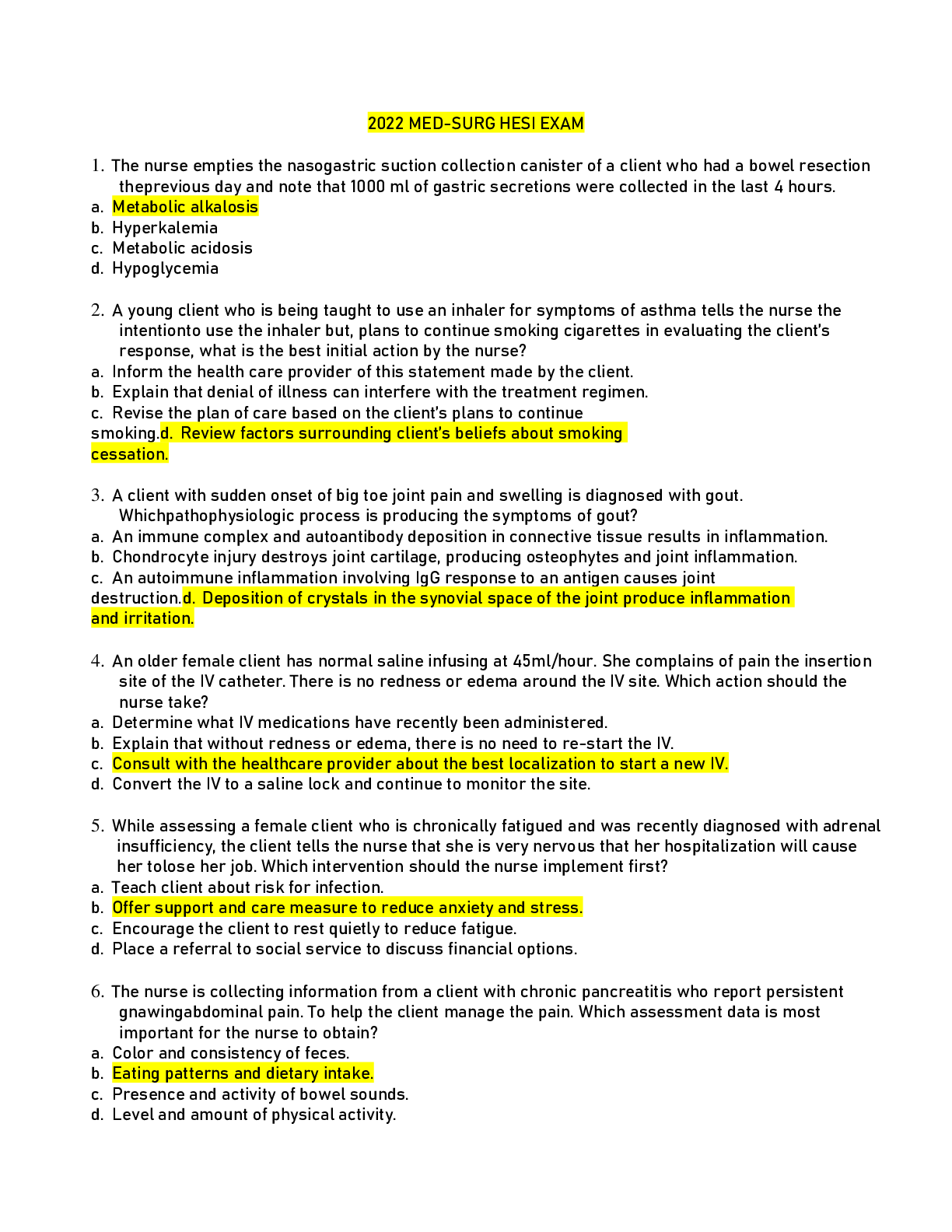
Reviews( 0 )
Document information
Connected school, study & course
About the document
Uploaded On
Apr 07, 2022
Number of pages
16
Written in
Additional information
This document has been written for:
Uploaded
Apr 07, 2022
Downloads
2
Views
252



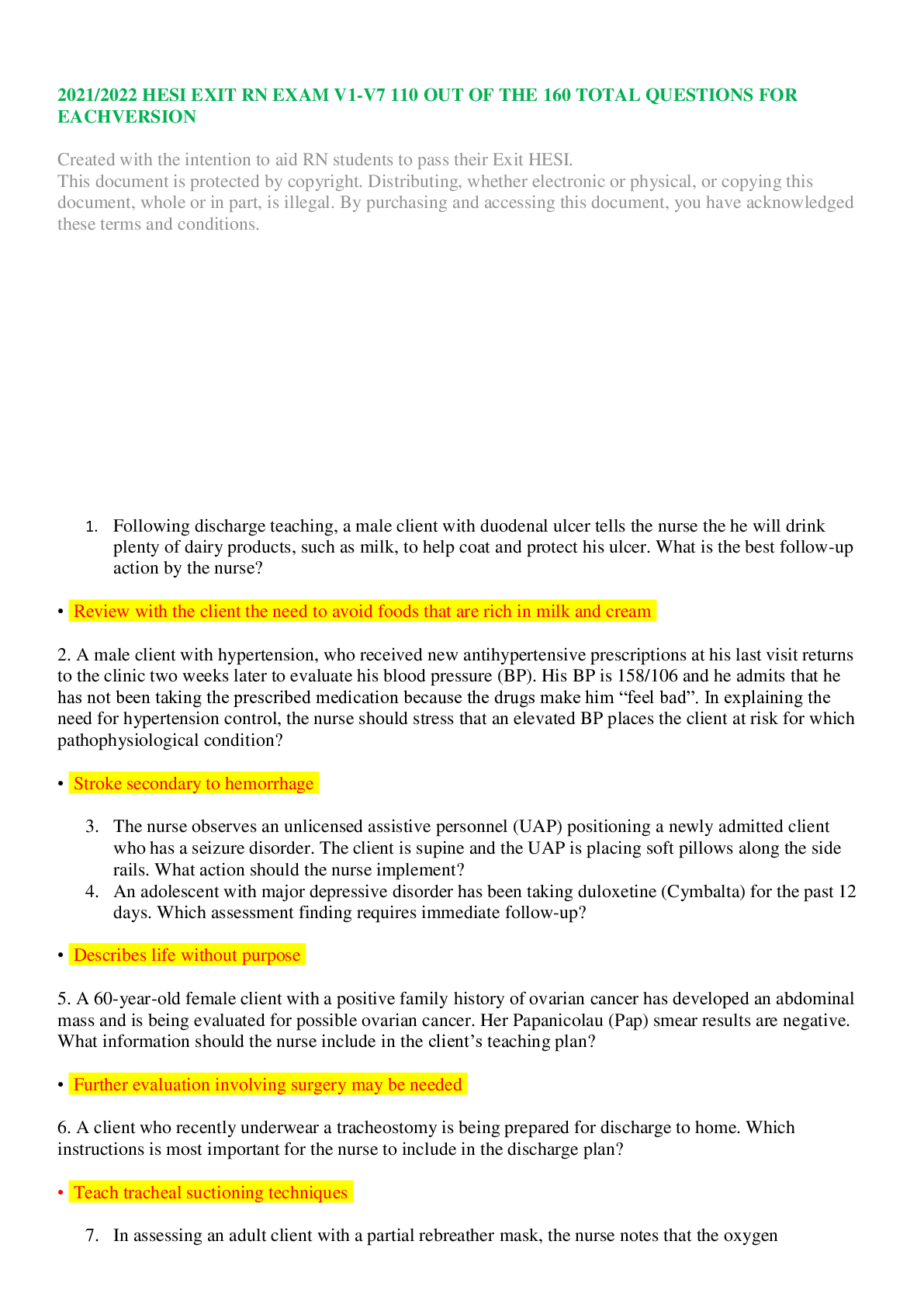

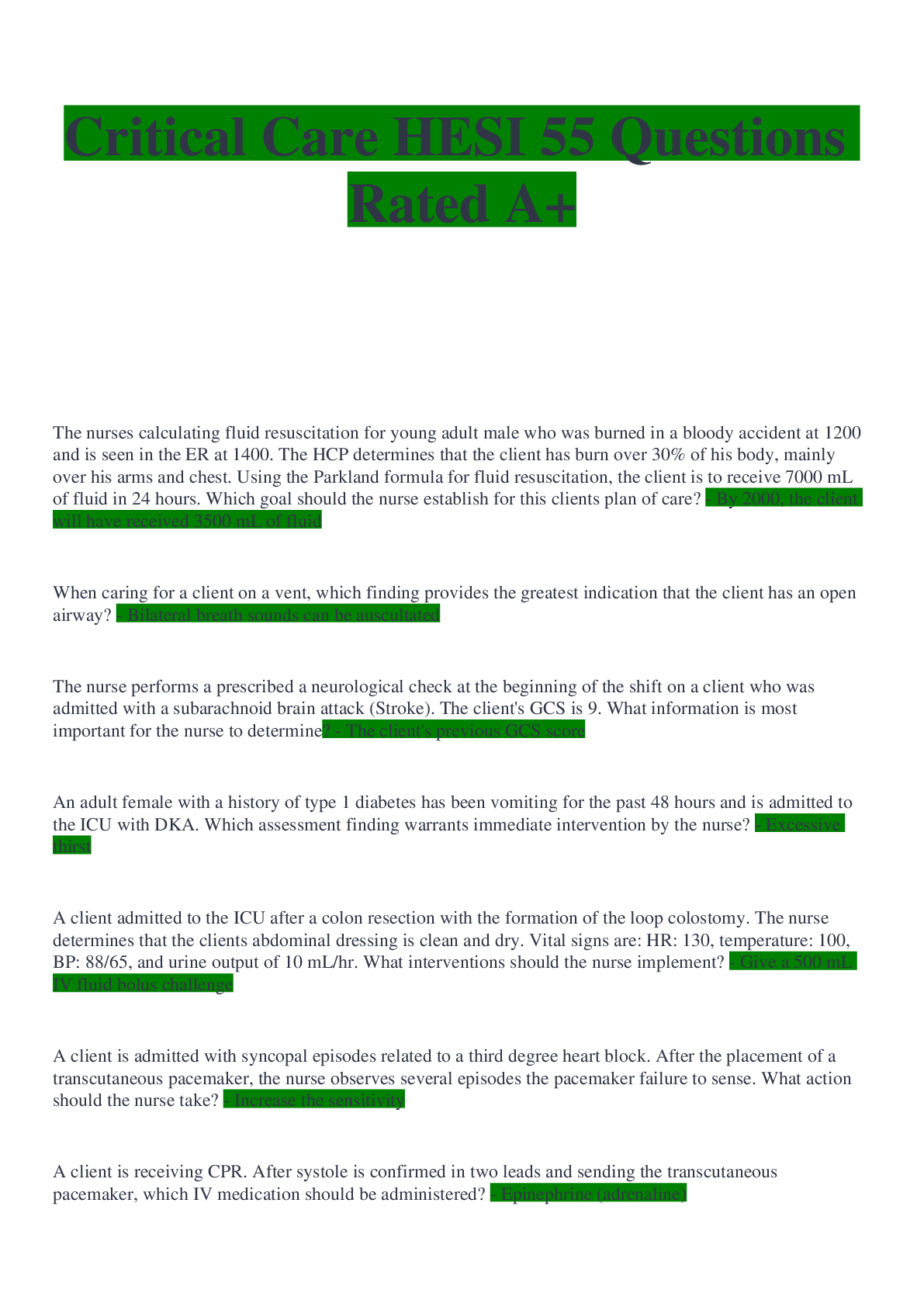

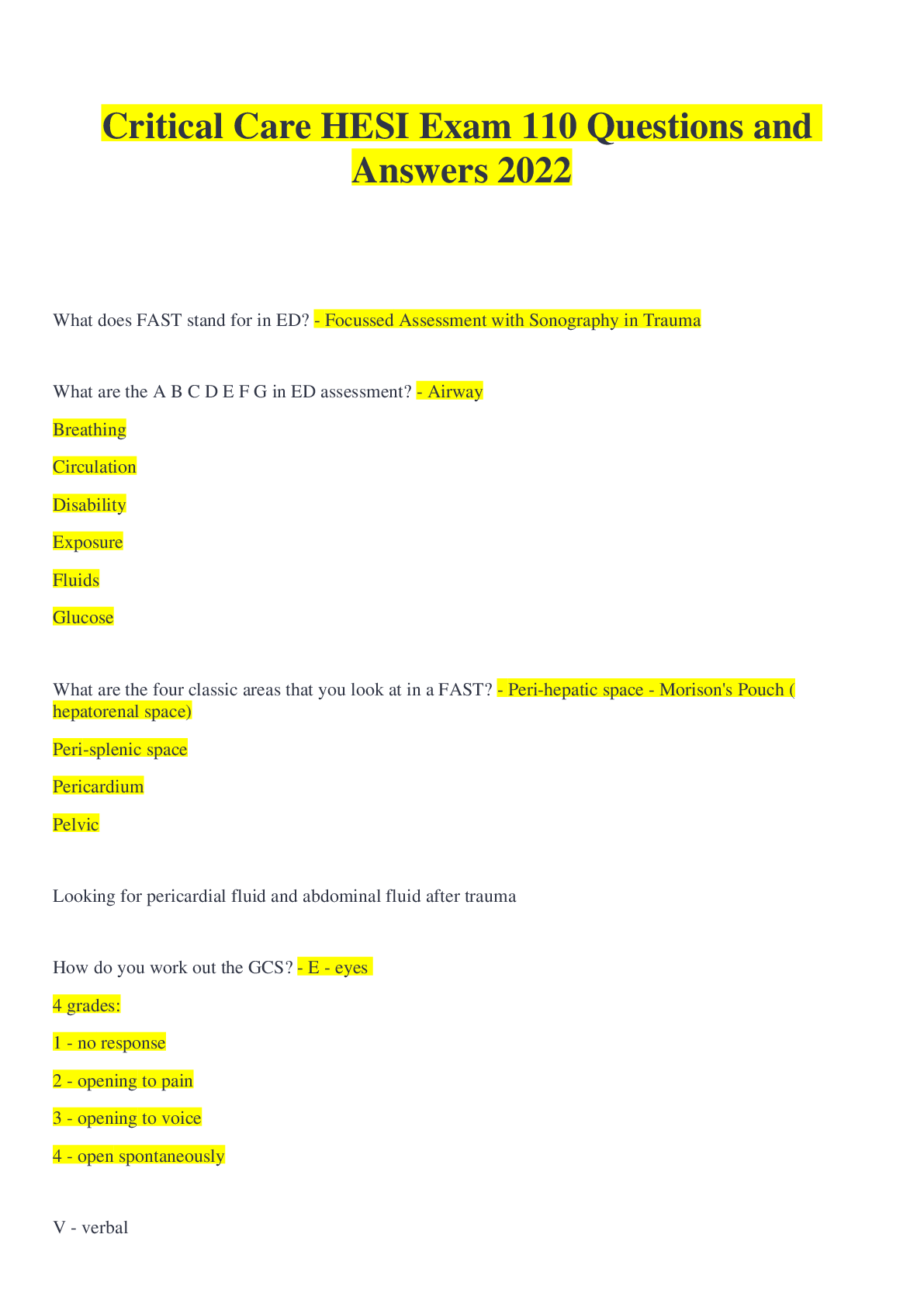
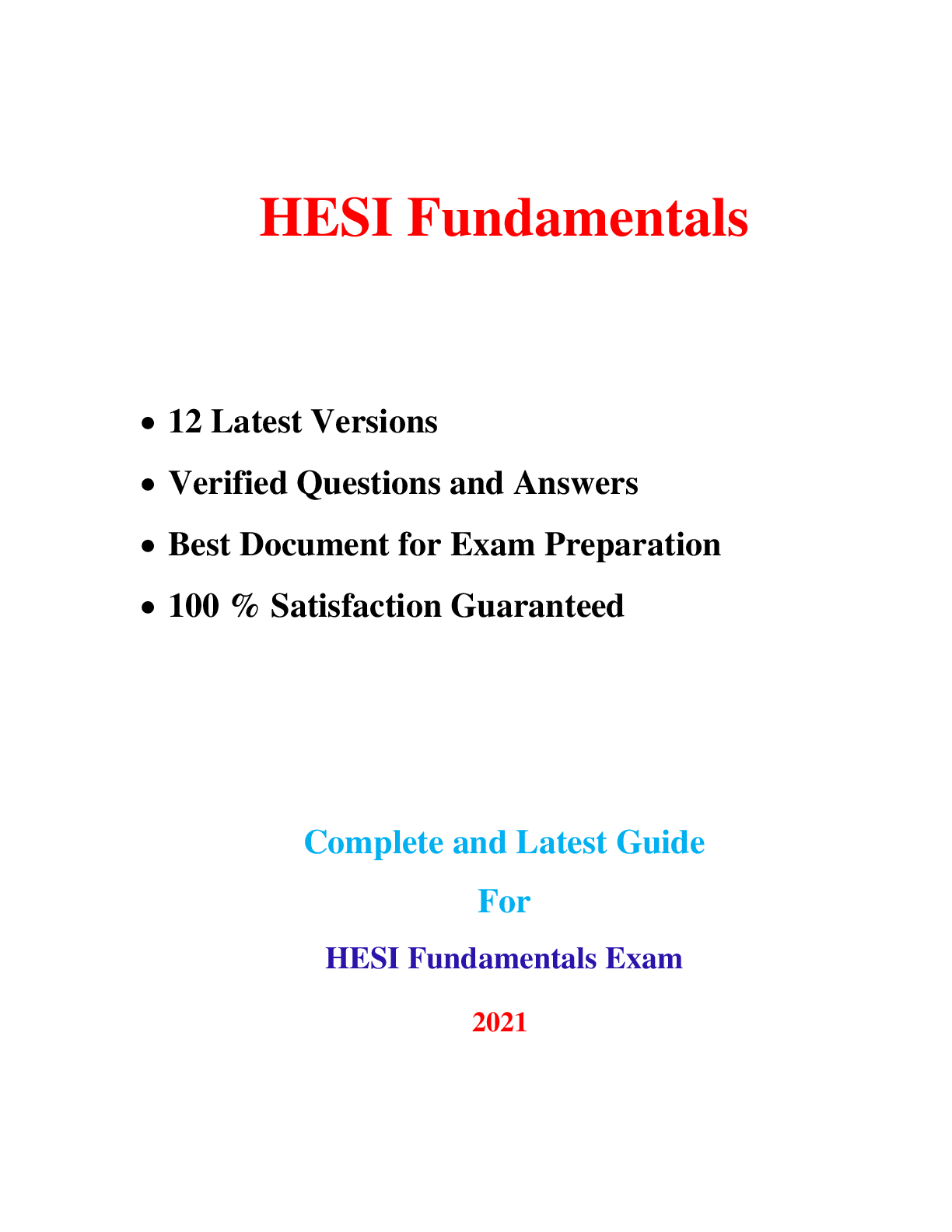

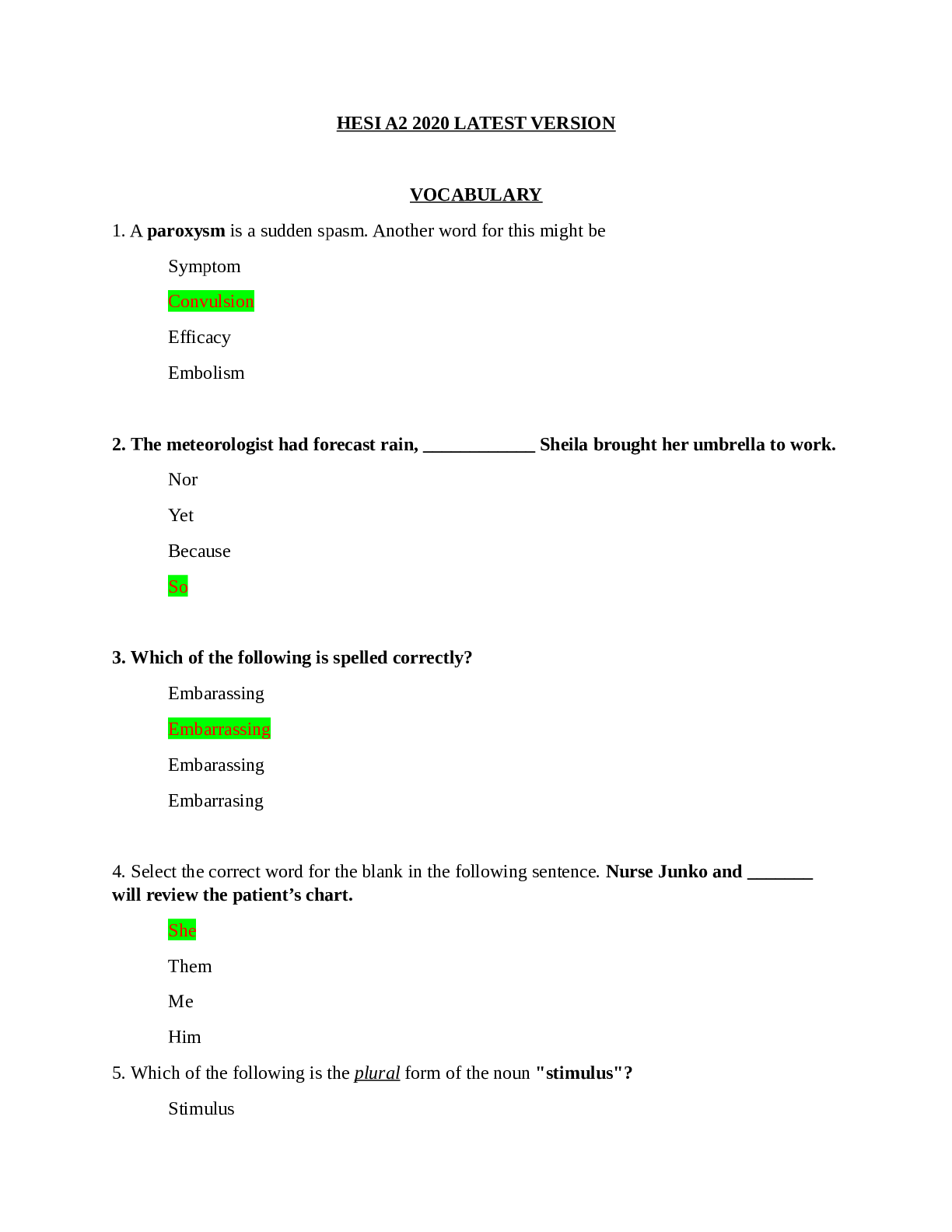



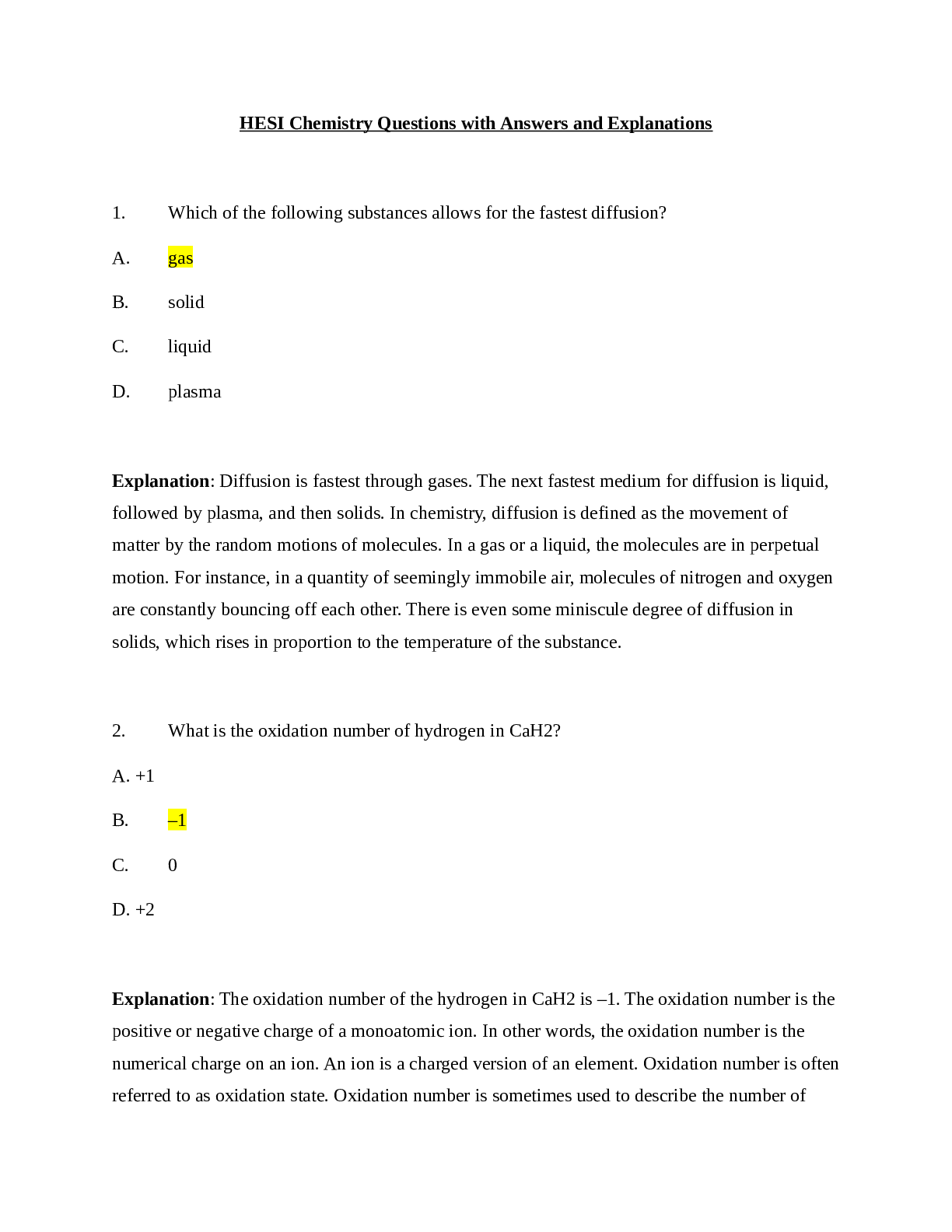

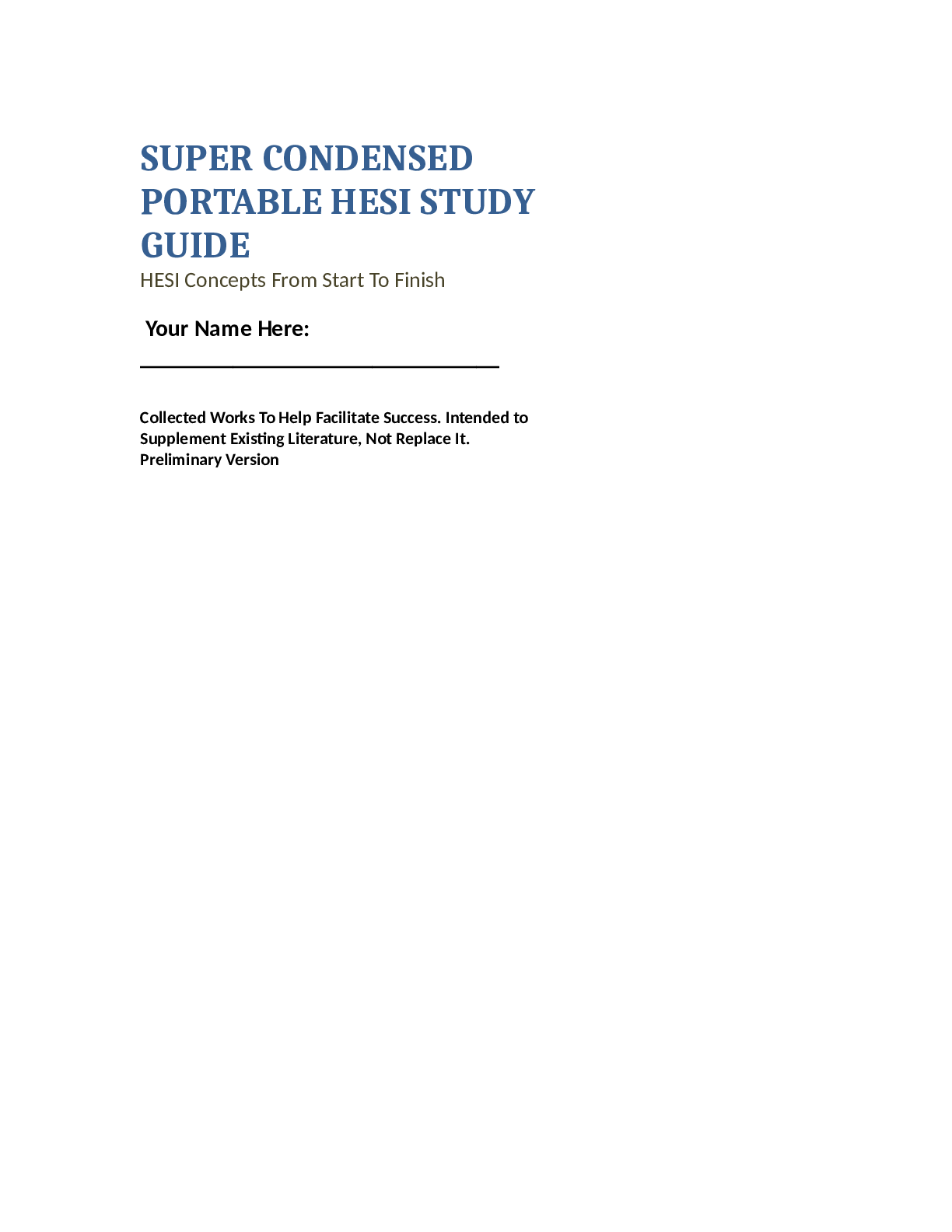




 (1).png)



